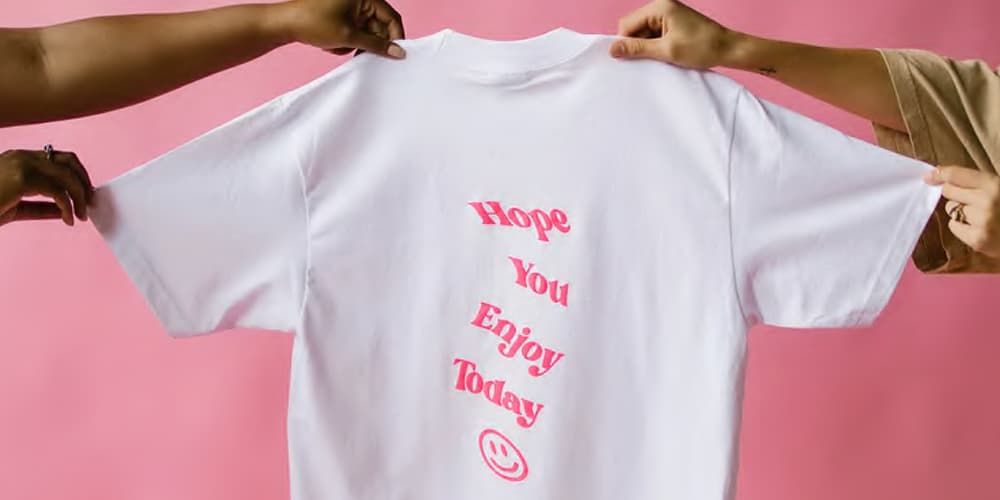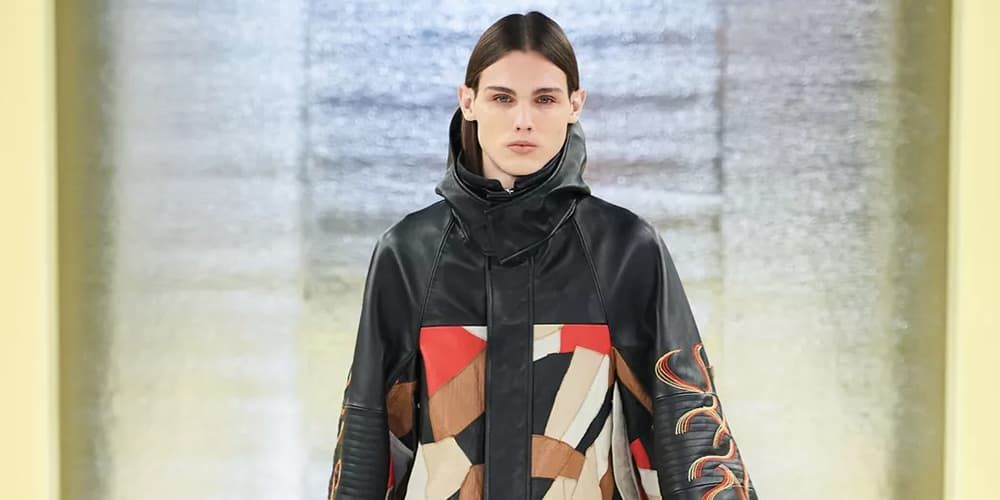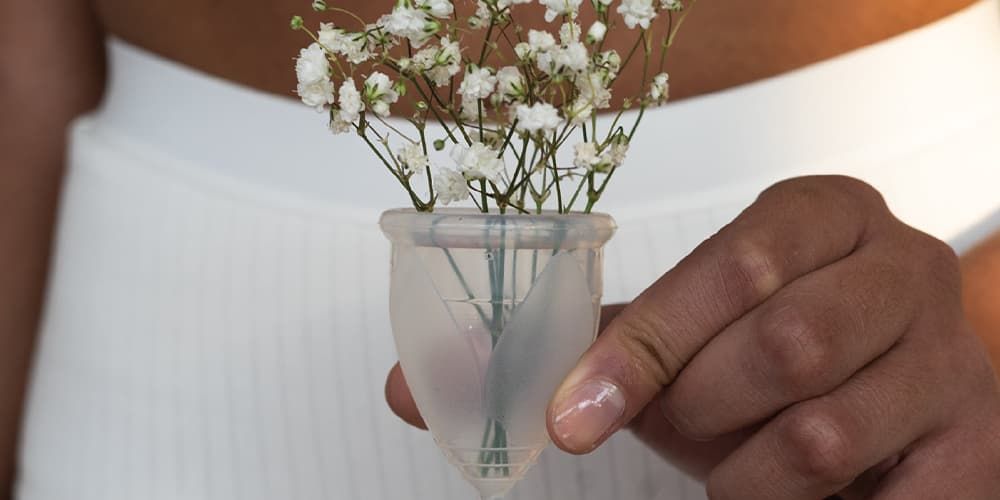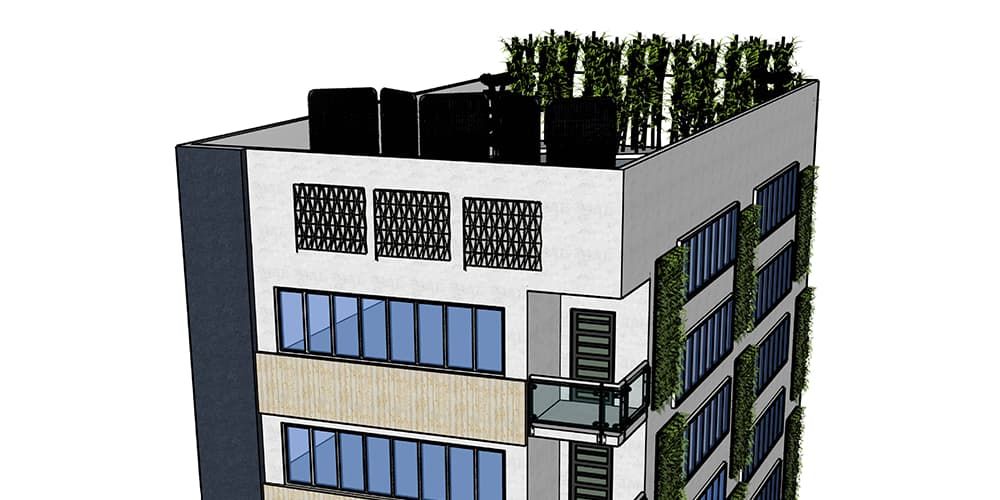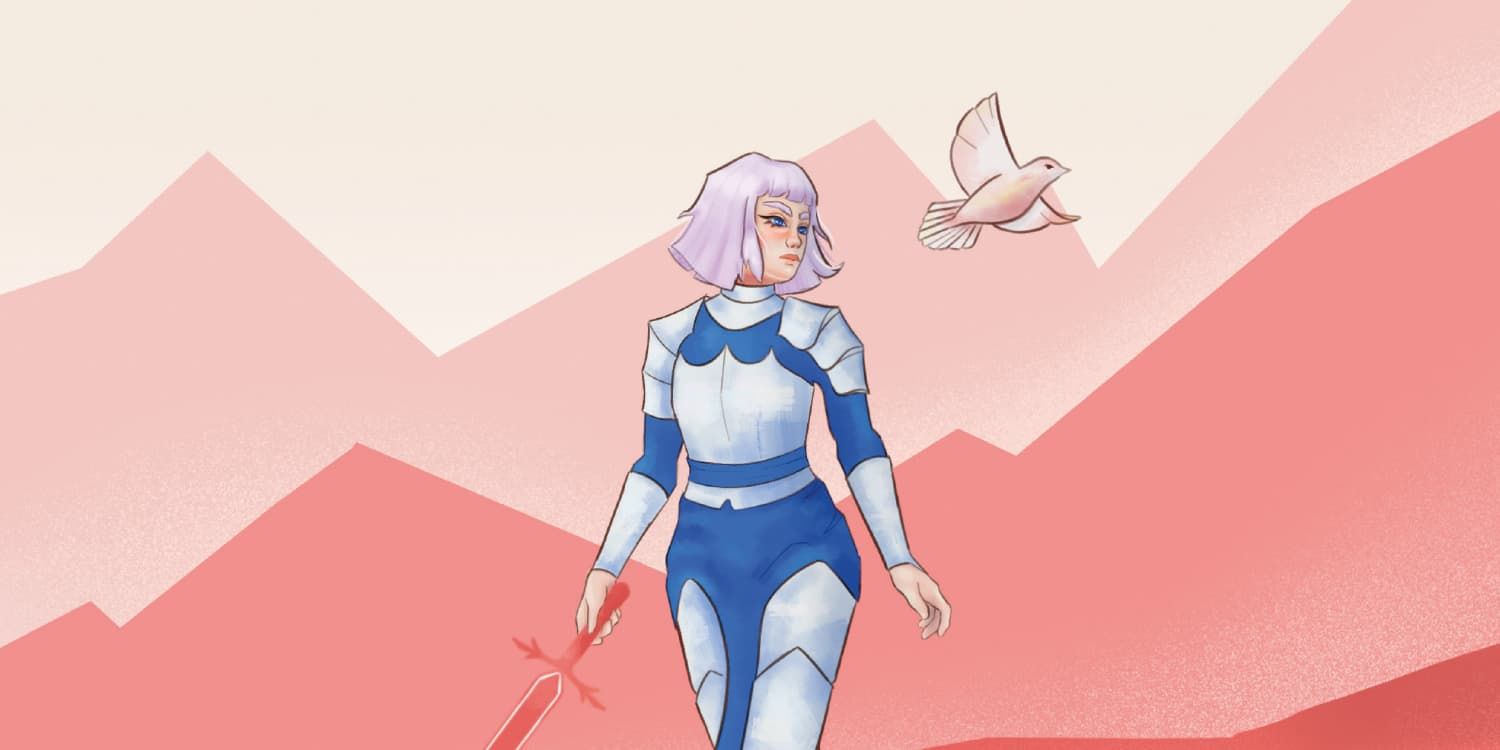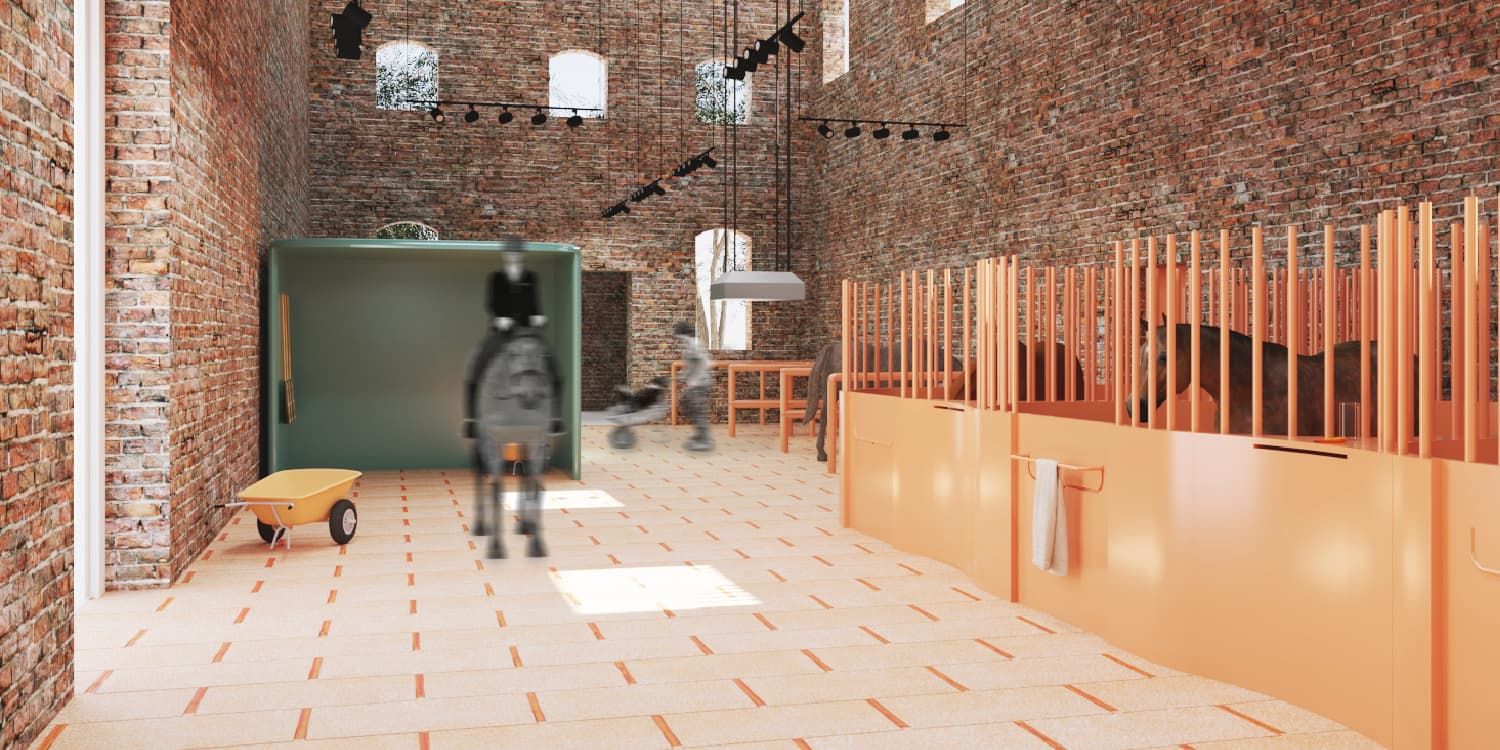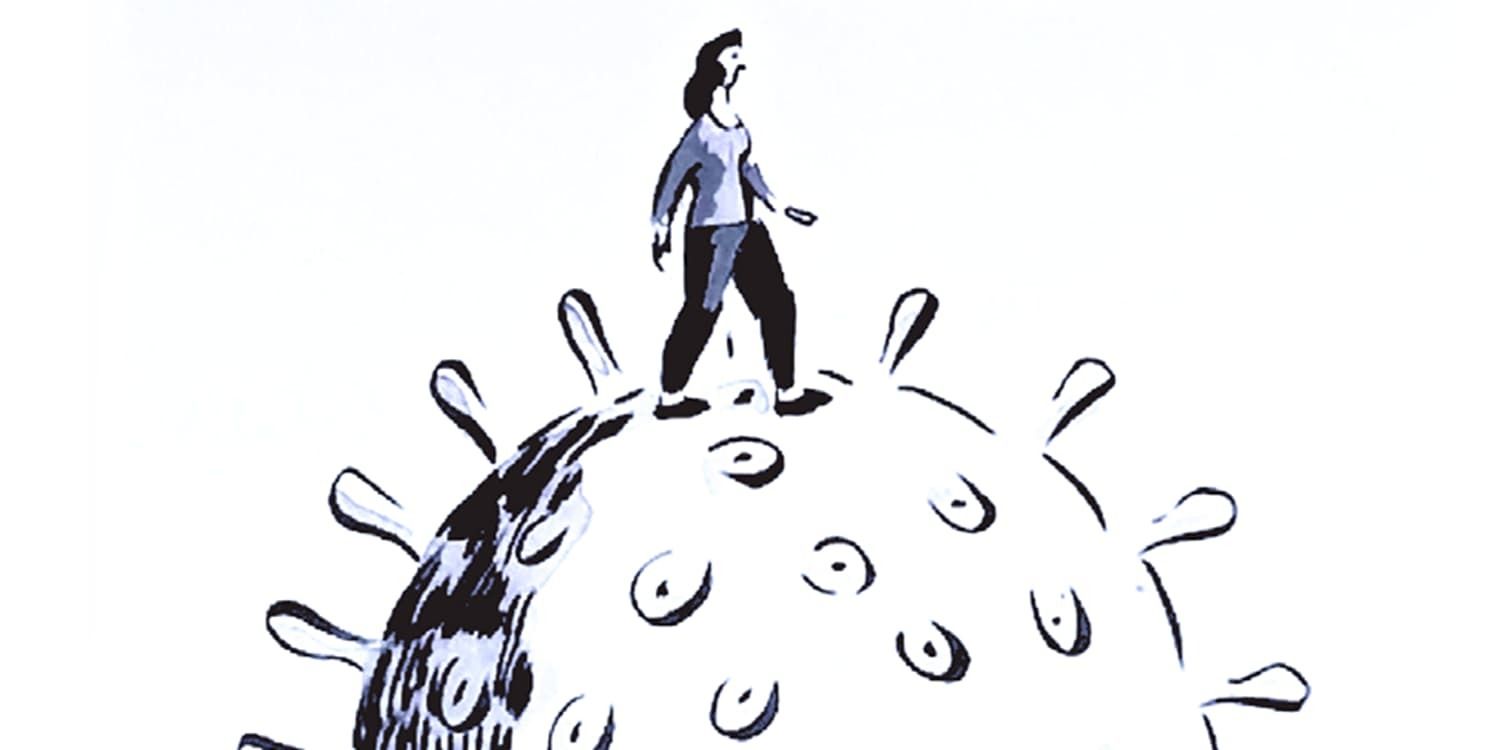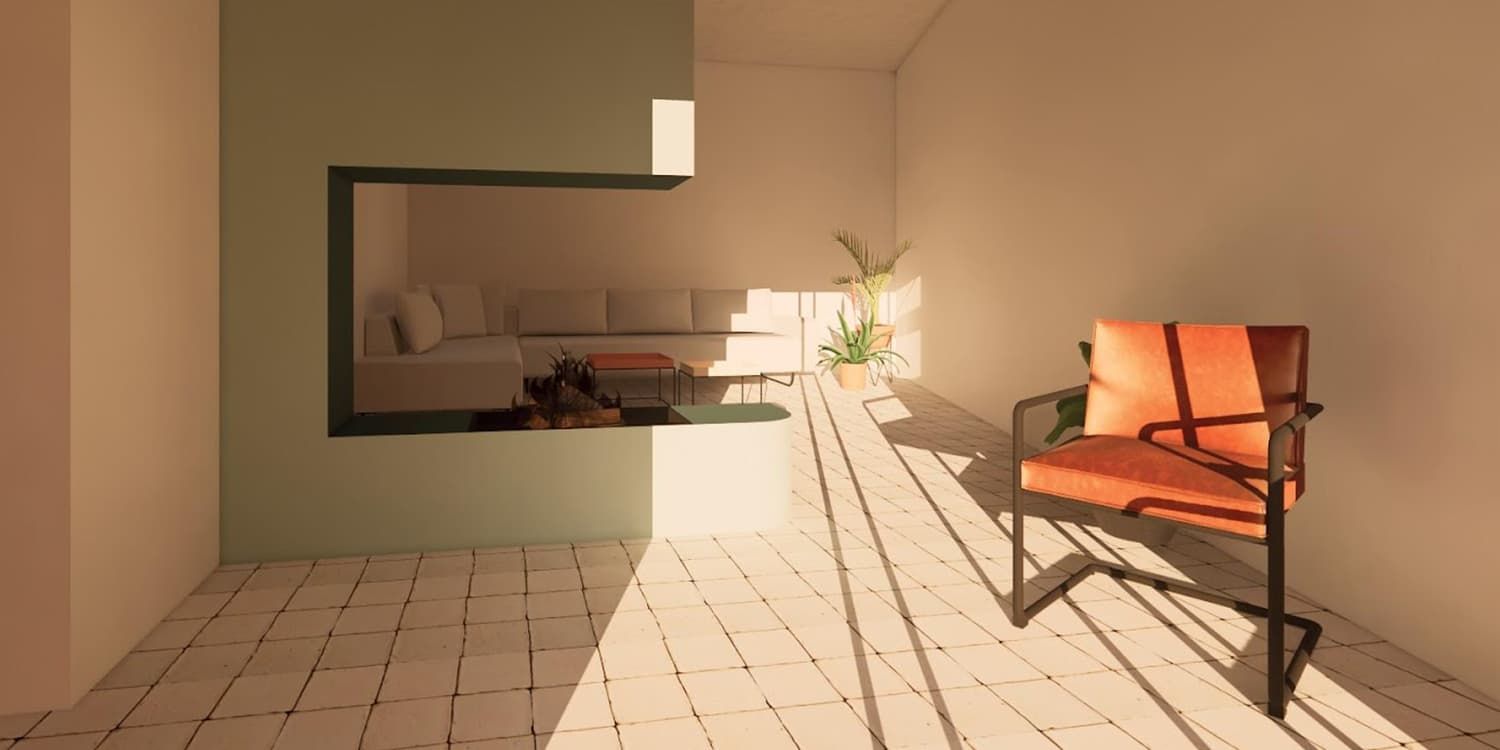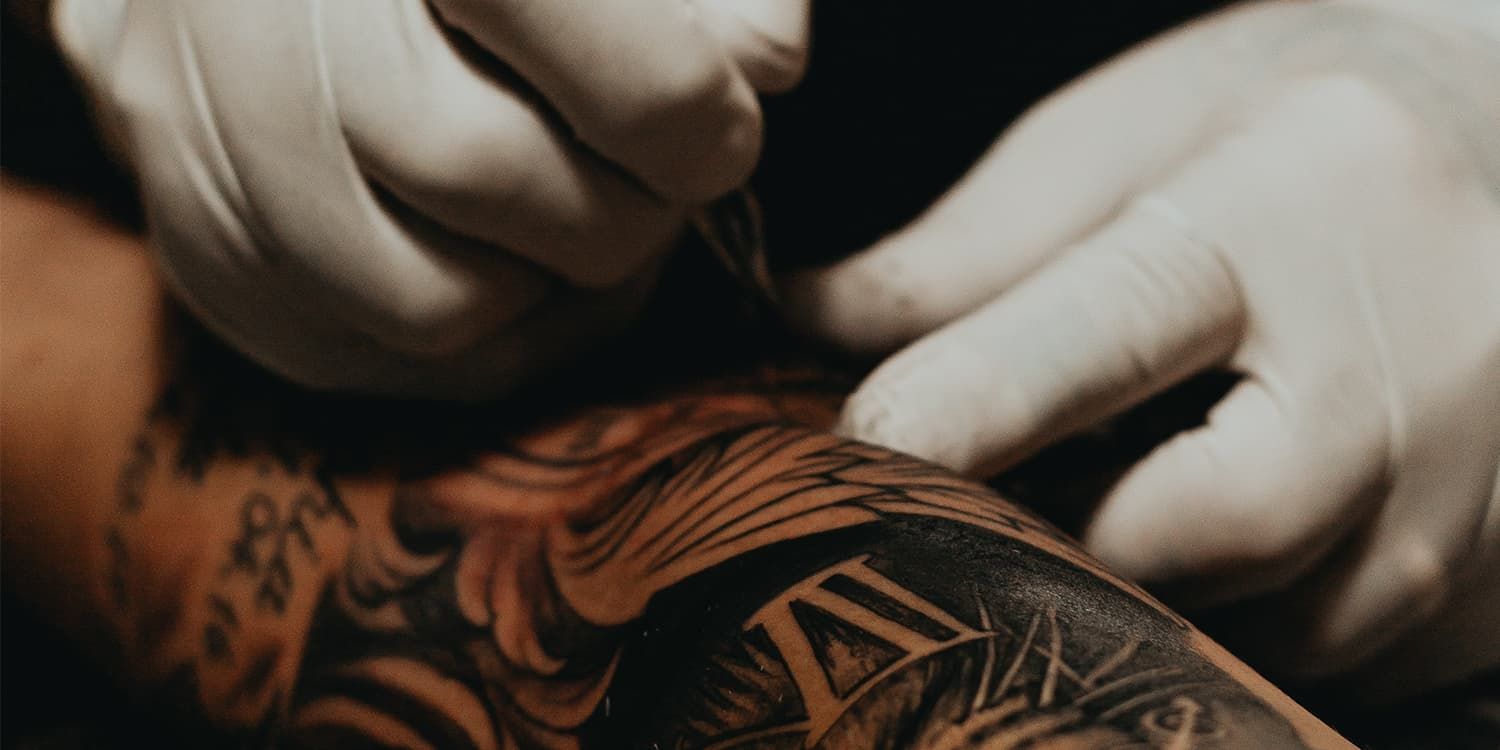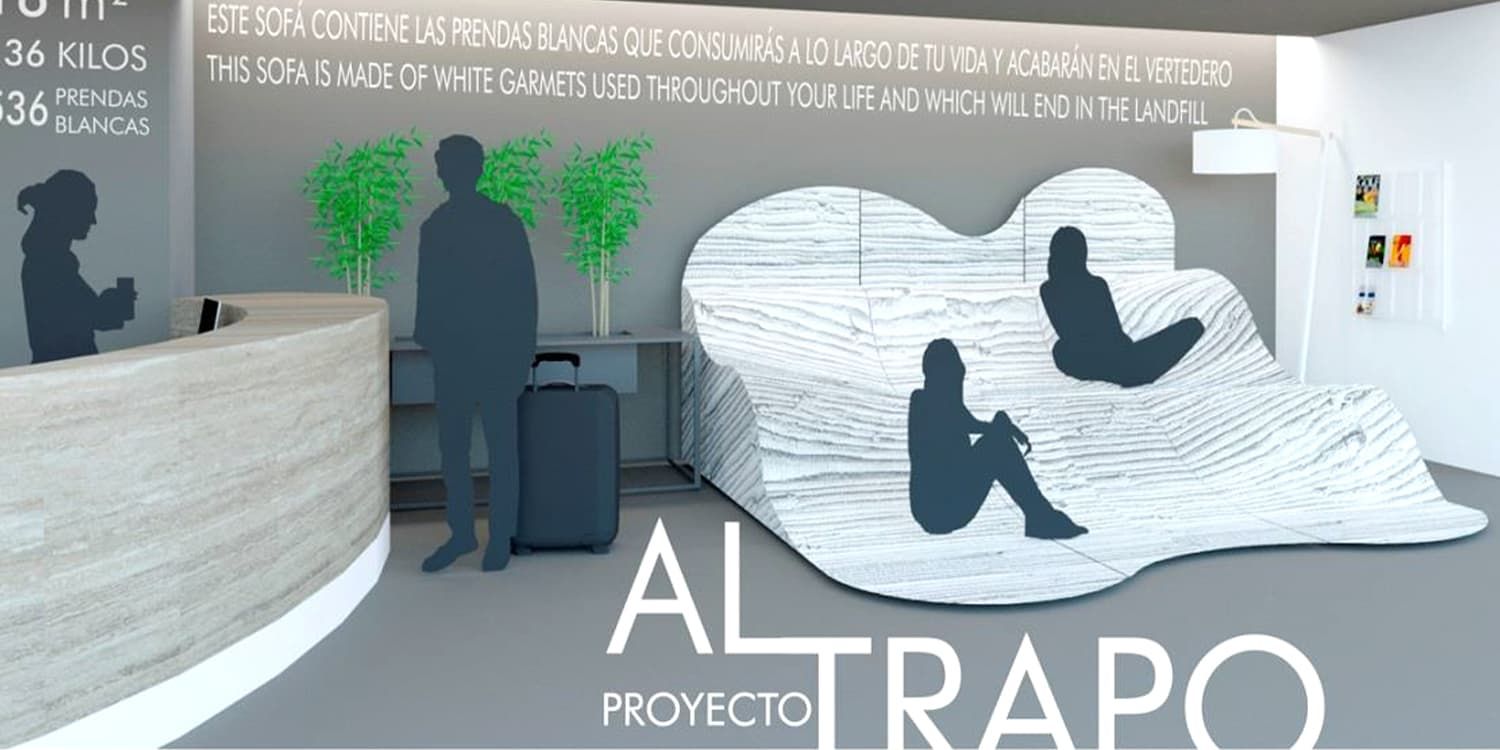- Subtítulo: Analysis of Slogans in Inditex Garments. Case: Spring-Summer 2023
- Autor: Cándida Martínez Lara
- Abstract:
El objetivo principal de este trabajo es determinar el uso del eslogan en el diseño de moda actual. Nos centramos en la empresa que más vende en España, siendo ésta Inditex. En concreto se analizarán los textos que aparecen impresos en las prendas de Zara, Stradivarius, Bershka y Pull&Bear, de la temporada primavera verano 2023. El presente trabajo observa el diseño de moda como herramienta de comunicación de valores a la sociedad. Existen estudios que analizan el eslogan como elemento únicamente publicitario, sin embargo, hay una carencia de investigaciones sobre la presencia de éste en las prendas consumidas masivamente a través del mercado fast fashion.
- Número revista: 2 - 2023
- DOI: 10.58534/LxCOg45IEb
- citation_title: The use of Text in Fashion Design
- citation_publication_date: 2023/12/8
- citation_online_date: 2023/12/8
- citation_pdf_url: /investigacion/concept/concept_2_tuotifd.pdf
- citation_journal_title: Concept
- citation_volume: 1
- citation_issue: 2
- citation_issn: 2952-1440
- citation_dissertation_institution: ESADA - Escuela Superior de Arte y Diseño de Andalucía
- citation_technical_report_institution: ESADA - Escuela Superior de Arte y Diseño de Andalucía
- citation_technical_report_number: 10.58534/LxCOg45IEb
- citation_keywords: fashion design, slogans, social values, fast fashion
- citation_abstract_html_url: https://www.esada.es/42-investigacion/756-the-use-of-text-in-fashion-design
concept
- Subtítulo: Analysis of Slogans in Inditex Garments. Case: Spring-Summer 2023
- Autor: Cándida Martínez Lara
- Abstract:
The main objective of this work is to determine the use of the slogan in current fashion design. We focus on the company that sells the most in Spain, this being Inditex. Specifically, the texts that appear printed on the garments of Zara, Stradivarius, Bershka and Pull&Bear, from the spring summer 2023 season, will be analyzed. This work observes fashion design as a tool for communicating values to society. There are studies that analyze the slogan as a purely advertising element, however, there is a lack of research on its presence in garments consumed massively through the fast fashion market.
- Número revista: 2 - 2023
- DOI: 10.58534/LxCOg45IEb
- citation_title: The use of Text in Fashion Design
- citation_publication_date: 2023/12/8
- citation_online_date: 2023/12/8
- citation_pdf_url: /investigacion/concept/concept_2_tuotifd.pdf
- citation_journal_title: Concept
- citation_volume: 1
- citation_issue: 2
- citation_issn: 2952-1440
- citation_dissertation_institution: ESADA - Escuela Superior de Arte y Diseño de Andalucía
- citation_technical_report_institution: ESADA - Escuela Superior de Arte y Diseño de Andalucía
- citation_technical_report_number: 10.58534/LxCOg45IEb
- citation_keywords: fashion design, slogans, social values, fast fashion
- citation_abstract_html_url: https://www.esada.es/en/45-research/761-the-use-of-text-in-fashion-design-eng
- Subtítulo: Analysis of the Collections from the Fashion Weeks of Copenhagen, New York, London, Milan and Paris. Case: Autumn-Winter Season 2023
- Autor: Celia Moreno García
- Abstract:
El objetivo del presente estudio es analizar el estado del diseño de moda genderless en las pasarelas actuales. Concretamente, se ha realizado un análisis de contenido de tipo cuantitativo. Éste se ha aplicado a una muestra de looks de firmas proclamadas o autoproclamadas genderless que han desfilado en las cinco pasarelas occidentales más importantes según publicaciones como Vogue, Elle o The New York Times. De este modo ha sido posible observar el estado actual y las evoluciones que han ocurrido en el diseño de moda genderless occidental. El análisis permite concluir que, aunque todavía se observan campos en los que la moda genderless abraza las elecciones más discretas, menos atrevidas y más utilitarias, esta moda se está alejando del enfoque meramente pragmático y tradicionalmente masculino.
- Número revista: 2 - 2023
- DOI: 10.58534/Qz68wSc6cS
- citation_title: Genderless Fashion Design
- citation_publication_date: 2023/12/8
- citation_online_date: 2023/12/8
- citation_pdf_url: /investigacion/concept/concept_2_gfd.pdf
- citation_journal_title: Concept
- citation_volume: 1
- citation_issue: 2
- citation_issn: 2952-1440
- citation_dissertation_institution: ESADA - Escuela Superior de Arte y Diseño de Andalucía
- citation_technical_report_institution: ESADA - Escuela Superior de Arte y Diseño de Andalucía
- citation_technical_report_number: 10.58534/Qz68wSc6cS
- citation_keywords: tatuaje, antecedentes, técnicas, evasión, piel, trasfondo
- citation_abstract_html_url: https://www.esada.es/investigacion/revista-concept/42-investigacion/755-genderless-fashion-design
- Subtítulo: Analysis of the Collections from the Fashion Weeks of Copenhagen, New York, London, Milan and Paris. Case: Autumn-Winter Season 2023
- Autor: Celia Moreno García
- Abstract:
The aim of this study is to analyze the state of genderless fashion design in current fashion weeks. Specifically, a quantitative content analysis was carried out. This was applied to a sample of looks from proclaimed or self-proclaimed genderless firms that have paraded on the five most important western catwalks according to publications such as Vogue, Elle or The New York Times. In this way, it was possible to observe the current state and evolutions that have occurred in western genderless fashion design. This analysis concludes that, even if there are still several fields in which genderless fashion embraces the most discreet, less daring and more utilitarian choices, this fashion is moving away from a merely pragmatic and traditionally masculine approach.
- Número revista: 2 - 2023
- DOI: 10.58534/Qz68wSc6cS
- citation_title: Genderless Fashion Design
- citation_publication_date: 2023/12/8
- citation_online_date: 2023/12/8
- citation_pdf_url: /investigacion/concept/concept_2_gfd.pdf
- citation_journal_title: Concept
- citation_volume: 1
- citation_issue: 2
- citation_issn: 2952-1440
- citation_dissertation_institution: ESADA - Escuela Superior de Arte y Diseño de Andalucía
- citation_technical_report_institution: ESADA - Escuela Superior de Arte y Diseño de Andalucía
- citation_technical_report_number: 10.58534/Qz68wSc6cS
- citation_keywords: fashion design, genderless, unisex, garments, visual language
- citation_abstract_html_url: https://www.esada.es/en/45-research/762-genderless-fashion-design-eng
- Subtítulo: Packaging Analysis for Menstrual Products. Case: 2022 Menstrual Cups
- Autor: María Barrio Ferrer
- Abstract:
Este trabajo tiene como objetivo analizar el packaging de productos menstruales, teniendo en cuenta que son algo indispensable para las mujeres en sus días con el ciclo. Dentro de esta gama de productos destacan las copas menstruales. Se realizará un análisis cuantitativo del packaging de las copas menstruales más vendidas en 2023, atendiendo a los colores, formas, tipografías, materiales y texturas para ver si responden al particular estado de las mujeres en esos días. Existen numerosos estudios que investigan la publicidad sobre este tipo de productos pero no hay un análisis que explique cómo el packaging se adecua a la situación de la mujer durante la menstruación. Esta investigación pretende cubrir esa carencia. La conclusión a la que se ha llegado es que en los diseños observados se han tenido en cuenta las necesidades más superficiales de la menstruación pero sin ahondar en un diseño más realista. Los ambientes evocados están alejados de la realidad y por ende de la comprensión de la mujer en esos días.
- Número revista: 2 - 2023
- DOI: 10.58534/52RslpFOQN
- citation_title: Graphic design for women
- citation_publication_date: 2023/12/8
- citation_online_date: 2023/12/8
- citation_pdf_url: /investigacion/concept/concept_2_gdfw.pdf
- citation_journal_title: Concept
- citation_volume: 1
- citation_issue: 2
- citation_issn: 2952-1440
- citation_dissertation_institution: ESADA - Escuela Superior de Arte y Diseño de Andalucía
- citation_technical_report_institution: ESADA - Escuela Superior de Arte y Diseño de Andalucía
- citation_technical_report_number: 10.58534/52RslpFOQN
- citation_keywords: fashion design, genderless, unisex, garments, visual language
- citation_abstract_html_url: https://www.esada.es/investigacion/revista-concept/42-investigacion/754-graphic-design-for-women
- Subtítulo: Packaging Analysis for Menstrual Products. Case: 2022 Menstrual Cups
- Autor: María Barrio Ferrer
- Abstract:
This paper aims to analyse the packaging of menstrual products, taking into account that they are indispensable for women in their cycle days. Within this range of products, menstrual cups stand out. A quantitative analysis of the packaging of the most sold menstrual cups in 2023 will be carried out, looking at the colors, shapes, typographies, materials and textures to see if they respond to the particular state of women on those days. There are numerous studies that investigate the advertising of this type of product, but there is no analysis that explains how the packaging design is adapted to the situation of women during menstruation. This research aims to fill that gap and provide data on this. The conclusion reached is that the most superficial needs of menstruation have been taken into account in the designs observed, but without delving into a more realistic design. The environments evoked are far from reality and therefore from the understanding of women in those days.
- Número revista: 2 - 2023
- DOI: 10.58534/52RslpFOQN
- citation_title: Graphic design for women
- citation_publication_date: 2023/12/8
- citation_online_date: 2023/12/8
- citation_pdf_url: /investigacion/concept/concept_2_gdfw.pdf
- citation_journal_title: Concept
- citation_volume: 1
- citation_issue: 2
- citation_issn: 2952-1440
- citation_dissertation_institution: ESADA - Escuela Superior de Arte y Diseño de Andalucía
- citation_technical_report_institution: ESADA - Escuela Superior de Arte y Diseño de Andalucía
- citation_technical_report_number: 10.58534/52RslpFOQN
- citation_keywords: graphic design, sensorial, packaging, woman, menstruation, menstrual cup
- citation_abstract_html_url: https://www.esada.es/en/investigacion/revista-concept/45-research/763-graphic-design-for-women-eng
- Subtítulo: Research and Development of a Water Resource in Harmony with Architecture
- Autor: Olga Cáceres Jijishvili
- Abstract:
Los profesionales de la construcción se enfrentan a desafíos urgentes y complejos con la adaptación al cambio climático y la pérdida de biodiversidad. Es esencial reestructurar y actualizar las ciudades para promover la salud ecológica y social en lugar de dañarla. La biomimética surge como una solución donde se imitan ecosistemas completos para mejorar de manera significativa el rendimiento ecológico de los edificios y entornos urbanos. Contribuye con algunos de los Objetivos globales de Desarrollo Sostenibles de las Naciones Unidas como el “obj. 6: Garantizar la disponibilidad de agua y su gestión sostenible y el saneamiento para todos”; el “obj. 11: lograr que las ciudades sean inclusivas, seguras, resilientes y sostenibles”; el “obj. 12: Garantizar modalidades de consumo y producción sostenibles”; el “obj. 13: Adoptar medidas urgentes para combatir el cambio climático y sus efectos”; y el “obj. 15: Gestionar sosteniblemente los bosques, luchar contra la desertificación, detener e invertir la degradación de las tierras, detener la pérdida de biodiversidad”.
El presente trabajo une la investigación con el desarrollo práctico, compartiendo la hipótesis de que en el futuro los edificios y las ciudades pueden ser contribuyentes activos en los sistemas socioecológicos, mediante enfoques estratégicos y tecnológicos. Para ello se ha diseñado un edificio en Granada que se integra con los servicios ecosistémicos que aborden el estrés hídrico y aplique principios de diseño regenerativo. La investigación exhaustiva abarca los temas mencionados anteriormente, así como elementos importantes para futuras aplicaciones prácticas. El resultado es un edificio con sistema cíclico de captación, depuración y reutilización de agua pluvial, que cumple los objetivos establecidos. Se utilizan aspas recolectoras de agua pluvial y humedad, aprovechando el recurso no potable obtenido. - Número revista: 2 - 2023
- DOI: 10.58534/Acno0HzOJ6
- citation_title: Product Design and Biomimetics
- citation_publication_date: 2023/12/8
- citation_online_date: 2023/12/8
- citation_pdf_url: investigacion/concept/concept_1_edgetdc.pdf
- citation_journal_title: Concept
- citation_volume: 1
- citation_issue: 2
- citation_issn: 2952-1440
- citation_dissertation_institution: ESADA - Escuela Superior de Arte y Diseño de Andalucía
- citation_technical_report_institution: ESADA - Escuela Superior de Arte y Diseño de Andalucía
- citation_technical_report_number: 10.58534/Acno0HzOJ6
- citation_keywords: illustration, psychology, video game, stress, concept art
- citation_abstract_html_url: https://www.esada.es/investigacion/revista-concept/42-investigacion/753-product-design-and-biomimetics
- Subtítulo: Research and Development of a Water Resource in Harmony with Architecture
- Autor: Olga Cáceres Jijishvili
- Abstract:
Building professionals face urgent and complex challenges related to climate change adaptation and biodiversity loss. It is essential to restructure and upgrade cities to promote ecological and social health rather than damage it. The application of biomimetics emerges as a solution where whole ecosystems and their functions are mimicked to significantly improve the ecological performance of buildings and urban environments. It contributes to some of the United Nations global Sustainable Development Goals such as “Goal 6: Ensure availability and sustainable management of water and sanitation for all”; “Goal 11: Make cities inclusive, safe, resilient and sustainable”; “Goal 12: Ensure sustainable consumption and production patterns”; “Goal 13: Take urgent action to combat climate change and its impacts”; and “Goal 15: Sustainably manage forests, combat desertification, halt and reverse land degradation, halt biodiversity loss”.
The aim is to link research with practical development, sharing the hypothesis that in the future buildings and cities can be active contributors in socio-ecological systems, through strategic and technological approaches.
A building has been designed in Granada that integrates with ecosystem services to address water stress and apply regenerative design principles. Extensive research covers the topics mentioned above, as well as important elements for future practical applications. The result is a building with a cyclic rainwater harvesting, purification and reuse system that meets the established objectives. Rainwater and humidity collecting blades are used, taking advantage of the non-potable resource obtained. - Número revista: 2 - 2023
- DOI: 10.58534/Acno0HzOJ6
- citation_title: Product Design and Biomimetics
- citation_publication_date: 2023/12/8
- citation_online_date: 2023/12/8
- citation_pdf_url: /investigacion/concept/concept_2_pdab.pdf
- citation_journal_title: Concept
- citation_volume: 1
- citation_issue: 2
- citation_issn: 2952-1440
- citation_dissertation_institution: ESADA - Escuela Superior de Arte y Diseño de Andalucía
- citation_technical_report_institution: ESADA - Escuela Superior de Arte y Diseño de Andalucía
- citation_technical_report_number: 10.58534/Acno0HzOJ6
- citation_keywords: illustration, psychology, video game, stress, concept art
- citation_abstract_html_url: https://www.esada.es/en/research/concept-magazine/45-research/764-product-design-and-biomimetics-eng
- Subtítulo: The video game as a tool to cope with stressful situations. Shift
- Autor: Marta Gavilán Gavira
- Abstract:
El estrés y la ansiedad son problemas frecuentes en nuestra sociedad. Este trabajo intenta aportar una solución a éstos a través del diseño de videojuegos. Con el tiempo se han desarrollado diferentes clases de videojuegos, algunos permiten al usuario relajarse, como Stardew Valley (Barone, 2016), mientras que otros crean estrés y ansiedad, como VVVVVV (Cavanagh, 2010) o Super Hexagon. A pesar de ello, no se han encontrado videojuegos específicos centrados en enseñar a los usuarios a manejar sus emociones. Aprovechando elementos del diseño gráfico, como la interactividad, la interfaz gráfica y el desarrollo de personajes, hemos generado una experiencia inmersiva, agradable y educativa. El resultado es una biblia de arte que recoja la gráfica creada, incluyendo bocetos del personaje, enemigos, escenas y objetos del juego, así como diseños de la interfaz; y un Game Design Document (GDD) donde reflejaremos todo lo necesario para el desarrollo de este videojuego.
- Número revista: 2 - 2023
- DOI: 10.58534/CpIo7aDG5y
- citation_title: Graphic design and new technologies
- citation_publication_date: 2023/12/8
- citation_online_date: 2023/12/8
- citation_pdf_url: /investigacion/concept/concept_2_gdant.pdf
- citation_journal_title: Concept
- citation_volume: 1
- citation_issue: 2
- citation_issn: 2952-1440
- citation_dissertation_institution: ESADA - Escuela Superior de Arte y Diseño de Andalucía
- citation_technical_report_institution: ESADA - Escuela Superior de Arte y Diseño de Andalucía
- citation_technical_report_number: 10.58534/CpIo7aDG5y
- citation_keywords: illustration, psychology, video game, stress, concept art
- citation_abstract_html_url: https://www.esada.es/investigacion/revista-concept/42-investigacion/751-graphic-design-and-new-technologies
- Subtítulo: The video game as a tool to cope with stressful situations. Shift
- Autor: Marta Gavilán Gavira
- Abstract:
Stress and anxiety problems are common in our society. This work aims to offer a solution through video game design. Over time, different classes of video games have been developed, some allow you to relax, such as Stardew Valley (Barone, 2016), while others create stress and anxiety, such as VVVVVV or Super Hexagon (Cavanagh, 2012). Despite this, no specific video games have been found focused on teaching users to manage their emotions. Taking advantage of elements of graphic design, such as interactivity, graphical interface and character development, we have generated an immersive, pleasant and educational experience. The result is an art bible that collects the graphics created, including sketches of the character, enemies, scenes and objects of the game, as well as interface designs; and a Game Design Document (GDD) where we will reflect everything necessary for the development of this video game.
- Número revista: 2 - 2023
- DOI: 10.58534/CpIo7aDG5y
- citation_title: Graphic design and new technologies
- citation_publication_date: 2023/12/8
- citation_online_date: 2023/12/8
- citation_pdf_url: /investigacion/concept/concept_2_gdant.pdf
- citation_journal_title: Concept
- citation_volume: 1
- citation_issue: 2
- citation_issn: 2952-1440
- citation_dissertation_institution: ESADA - Escuela Superior de Arte y Diseño de Andalucía
- citation_technical_report_institution: ESADA - Escuela Superior de Arte y Diseño de Andalucía
- citation_technical_report_number: 10.58534/CpIo7aDG5y
- citation_keywords: illustration, psychology, video game, stress, concept art
- citation_abstract_html_url: https://www.esada.es/en/research/concept-magazine/45-research/765-graphic-design-and-new-technologies-eng
- Subtítulo: Analysis of Current Trends and Piloting of User Questionnaire
- Autor: Paola Muñoz Caballero
- Abstract:
La infancia es una etapa crucial en el desarrollo de los individuos, y los juguetes desempeñan un papel fundamental en la formación de vínculos, la preparación para desafíos futuros y el desarrollo de la identidad de género. La conciencia de la transexualidad generalmente se manifiesta en torno a los ocho años, aunque puede haber indicios previos. Padres y educadores necesitan herramientas que les permitan abordar estas situaciones de manera efectiva para fomentar el desarrollo saludable de los niños y promover la aceptación de la diversidad en entornos infantiles.
En este contexto, resulta necesario investigar el impacto de los juguetes en la infancia, así como las características de diseño que deben tenerse en cuenta para abordar el desarrollo de la identidad de género. Este trabajo aborda una metodología mixta. Por un lado, se llevó a cabo un estudio tipológico en una amplia muestra de juguetes, y por otro lado, se realizó un piloto de un cuestionario enfocado en el diseño de juguetes inclusivos y su impacto en la infancia transexual, dirigido a padres, niños y personas transexuales.
Los resultados obtenidos indican que existen características clave en el diseño de juguetes, como la representación corporal, la variedad cromática y las mecánicas de juego mixtas, que pueden contribuir a mejorar la integración y el desarrollo de la infancia transexual. Además, se confirma la necesidad de profundizar en la relación entre identidad de género y diseño de juguetes, dado que se demuestra que estos últimos son herramientas fundamentales en el desarrollo de los niños. - Número revista: 2 - 2023
- DOI: 10.58534/4vdFeuNjcO
- citation_title: The Socio-Educational Role of Toy Design on Gender Identity
- citation_publication_date: 2023/12/8
- citation_online_date: 2023/12/8
- citation_pdf_url: /investigacion/concept/concept_2_tserotdogi.pdf
- citation_journal_title: Concept
- citation_volume: 1
- citation_issue: 2
- citation_issn: 2952-1440
- citation_dissertation_institution: ESADA - Escuela Superior de Arte y Diseño de Andalucía
- citation_technical_report_institution: ESADA - Escuela Superior de Arte y Diseño de Andalucía
- citation_technical_report_number: 10.58534/4vdFeuNjcO
- citation_keywords: plaything design, educational toys, gender identity, children's education, inclusion, transgender
- citation_abstract_html_url: https://www.esada.es/investigacion/revista-concept/42-investigacion/750-the-socio-educational-role-of-toy-design-on-gender-identity
- Subtítulo: Analysis of Current Trends and Piloting of User Questionnaire
- Autor: Paola Muñoz Caballero
- Abstract:
Childhood is a crucial stage in individuals’ development, and toys play a fundamental role in forming bonds, preparing for future challenges, and developing gender identity. Awareness of transgender identity typically emerges around the age of 8, although there may be earlier signs. Parents and educators need tools that enable them to effectively address these situations to promote healthy child development and foster acceptance of diversity in childhood environments.
In this context, it is necessary to investigate the impact of toys on childhood and the design characteristics that should be considered in addressing gender identity development. This work approaches a mixed methodology. On one hand, a typological study was conducted on a wide sample of toys, and on the other hand, a questionnaire pilot study focused on inclusive toy design and its impact on transgender childhood was carried out, targeting parents, children, and transgender individuals.
The results indicate that there are key characteristics in toy design, such as body representation, chromatic variety, and mixed gameplay mechanics, that can contribute to improving integration and the development of transgender childhood. Furthermore, the need to further explore the relationship between gender identity and toy design is confirmed, as it is demonstrated that toys are essential tools in children’s development. - Número revista: 2 - 2023
- DOI: 10.58534/4vdFeuNjcO
- citation_title: The Socio-Educational Role of Toy Design on Gender Identity
- citation_publication_date: 2023/12/8
- citation_online_date: 2023/12/8
- citation_pdf_url: /investigacion/concept/concept_2_tserotdogi.pdf
- citation_journal_title: Concept
- citation_volume: 1
- citation_issue: 2
- citation_issn: 2952-1440
- citation_dissertation_institution: ESADA - Escuela Superior de Arte y Diseño de Andalucía
- citation_technical_report_institution: ESADA - Escuela Superior de Arte y Diseño de Andalucía
- citation_technical_report_number: 10.58534/4vdFeuNjcO
- citation_keywords: plaything design, educational toys, gender identity, children's education, inclusion, transgender
- citation_abstract_html_url: https://www.esada.es/en/research/concept-magazine/45-research/766-the-socio-educational-role-of-toy-design-on-gender-identity-eng
- Subtítulo: Integral design of a 360º equestrian centre. Dinámico
- Autor: Rocío Maldonado Lasunción
- Abstract:
El binomio caballo-humano es milenario y la elección de este animal como compañero de trabajos y vida no es casual. Este animal destaca por su inteligencia y sensibilidad al tiempo que, por su fuerza y agilidad, a pesar de su gran tamaño.
Esta investigación toma a este binomio como protagonista y plantea la creación de un centro ecuestre en el que se enseñe tanto la equitación como la forma de vida con los caballos.
Se escoge como emplazamiento la Azucarera de San Isidro, ubicada en el límite entre la Vega y la ciudad de Granada. Un complejo arquitectónico, Bien de Interés Cultural, con una superficie interior de más de 4000 m2 distribuidos en diferentes conjuntos de naves.
La estrategia de actuación y rehabilitación consiste en introducir elementos ligeros que alberguen los usos necesarios y que no esté en contacto con la arquitectura existente. A nivel estético, se propone una gama de formas y colores que se diferencian en la construcción primera evitando falsos históricos.
El concepto con el que se trabaja es la dinámica del movimiento del caballo. La geometría corporal del animal destaca por las curvas. Además, sus movimientos, la forma de mover las orejas, de girar, de saltar o el trazado de un recorrido de salto, tienen como elemento común la curva. Esto se utiliza para diseñar cinco estructuras redondeadas, a partir de las cuales se generan todos los espacios necesarios para el desarrollo de la actividad. Esto trae como consecuencia una mejora del bienestar animal y la limpieza.
En suma, Dinámico pone las miras en el bienestar animal y crea espacios seguros que van más allá de lo que a día de hoy se concibe para un centro ecuestre. - Número revista: 2 - 2023
- DOI: 10.58534/TqfgPFguKk
- citation_title: Spaces for Work
- citation_publication_date: 2023/12/8
- citation_online_date: 2023/12/8
- citation_pdf_url: /investigacion/concept/concept_2_sfw.pdf
- citation_journal_title: Concept
- citation_volume: 1
- citation_issue: 2
- citation_issn: 2952-1440
- citation_dissertation_institution: ESADA - Escuela Superior de Arte y Diseño de Andalucía
- citation_technical_report_institution: ESADA - Escuela Superior de Arte y Diseño de Andalucía
- citation_technical_report_number: 10.58534/TqfgPFguKk
- citation_keywords: equestrian centre, stabling, interior design, rehabilitation, sports facilities, movement dynamics, animal welfare
- citation_abstract_html_url: https://www.esada.es/investigacion/revista-concept/42-investigacion/749-spaces-for-work
- Subtítulo: Integral design of a 360º equestrian centre. Dinámico
- Autor: Rocío Maldonado Lasunción
- Abstract:
The horse-human pairing is thousands of years old and the choice of this animal as a companion for work and life is no coincidence. This animal stands out for its intelligence and sensitivity as well as its strength and agility, despite its large size.
This research takes this binomial as the protagonist and proposes the creation of an equestrian centre in which both riding and the way of life with horses would be taught.
The San Isidro sugar factory, located on the border between the Vega and the city of Granada, was chosen as the site. An architectural complex, an Asset of Cultural Interest, with an interior surface area of more than 4,000 m2 distributed in different sets of warehouses.
The strategy of action and rehabilitation consists of introducing light elements that house the necessary uses and that are not in contact with the existing architecture. In addition, on an aesthetic level, a range of shapes and colours are sought that are differentiated from the original construction and, therefore, there is no room for false historical elements.
The concept behind the work is the dynamics of the horse’s movement. The animal’s body geometry is characterised by curves. In addition, its movements, the way it moves its ears, turns, jumps or the layout of a jumping route all have curves as a common element. This is used to design five curved structures, from which all the necessary spaces are generated for the development of the activity. This results in improved animal welfare and cleanliness.
In short, Dinámico focuses on animal welfare and creates safe spaces that go beyond what is currently conceived for an equestrian centre. - Número revista: 2 - 2023
- DOI: 10.58534/TqfgPFguKk
- citation_title: Spaces for Work
- citation_publication_date: 2023/12/8
- citation_online_date: 2023/12/8
- citation_pdf_url: /investigacion/concept/concept_2_sfw.pdf
- citation_journal_title: Concept
- citation_volume: 1
- citation_issue: 2
- citation_issn: 2952-1440
- citation_dissertation_institution: ESADA - Escuela Superior de Arte y Diseño de Andalucía
- citation_technical_report_institution: ESADA - Escuela Superior de Arte y Diseño de Andalucía
- citation_technical_report_number: 10.58534/TqfgPFguKk
- citation_keywords: equestrian centre, stabling, interior design, rehabilitation, sports facilities, movement dynamics, animal welfare
- citation_abstract_html_url: https://www.esada.es/en/research/concept-magazine/45-research/767-spaces-for-work-eng
- Subtítulo: Propuesta de reutilización del plástico de los invernaderos almerienses. Colección Agricostura
- Autor: Elena Funes Suárez
- Abstract:
Agricostura is a collection of women’s Haute Couture fashion which, through the artistic support that fashion itself produces, aims to tell the story that has happened in the Almeria countryside.
Agricostura intends to give greater scope to this story, in a way that has not been done before.
Going through its three main phases, designs will be produced that speak of the past, present and possible future of the fruit and vegetable sector. The collection is inspired by science, progress, culture and sustainability.
As a result, a fashion collection of a total of thirty women’s designs has been created which, incorporating the materials typical of the Almeria countryside with those intrinsic to the world of fashion, evoke values of craftsmanship, tradition, know-how and respect for the environment.
- Número revista: 1 - 2022
- DOI: 10.58534/2SVKNhlBBh-1-5
- citation_title: Diseño de moda y sostenibilidad
- citation_publication_date: 2022/12/8
- citation_online_date: 2022/12/8
- citation_pdf_url: investigacion/concept/concept_1_ddmys.pdf
- citation_journal_title: Concept
- citation_volume: 1
- citation_issue: 1
- citation_issn: 2952-1440
- citation_dissertation_institution: ESADA - Escuela Superior de Arte y Diseño de Andalucía
- citation_technical_report_institution: ESADA - Escuela Superior de Arte y Diseño de Andalucía
- citation_technical_report_number: 10.58534/2SVKNhlBBh-1-5
- citation_keywords: alta costura, sostenibilidad, agricultura, culturalidad, progreso
- citation_abstract_html_url: https://www.esada.es/investigacion/revista-concept/42-investigacion/586-diseno-de-moda-y-sostenibilidad
- Subtítulo: Análisis comparativo entre memes y viñetas cómicas. Caso: pandemia Covid-19 en España, 2020
- Autor: Patricia Prieto Arroyo
- Abstract:
This study aims to analyse the graphic language of cartoons in times of crisis. Specifically, we will look at the cartoons created by El Roto and published by the newspaper El País during the days of confinement due to the Covid-19 pandemic. To this end, the methodology of content analysis has been applied using a quantitative approach. It is concluded from the results obtained that all the hypotheses put forward are fulfilled, except the last one.
- Número revista: 1 - 2022
- DOI: 10.58534/2SVKNhlBBh-1-4
- citation_title: Diseño gráfico y humor en tiempos de crisis
- citation_publication_date: 2022/12/8
- citation_online_date: 2022/12/8
- citation_pdf_url: investigacion/concept/concept_1_dgyhetdc.pdf
- citation_journal_title: Concept
- citation_volume: 1
- citation_issue: 1
- citation_issn: 2952-1440
- citation_dissertation_institution: ESADA - Escuela Superior de Arte y Diseño de Andalucía
- citation_technical_report_institution: ESADA - Escuela Superior de Arte y Diseño de Andalucía
- citation_technical_report_number: 10.58534/2SVKNhlBBh-1-4
- citation_keywords: humor gráfico, viñeta, meme, pandemia, covid-19
- citation_abstract_html_url: https://www.esada.es/investigacion/revista-concept/42-investigacion/587-diseno-grafico-y-humor-en-tiempos-de-crisis
- Subtítulo: Rehabilitación de una vivienda en la vega de Granada. Los estratos del hábitat
- Autor: Gema Barranco Martín
- Abstract:
The Vega of Granada has been linked to the city for as long as it has been known. The fact that the first settlements existed in Granada is due to its location, protected by the mountains and with a large plain of fertile land that has favoured the livelihood and economy of the region.
The traditional constructions of the Vega de Granada have a typology of load-bearing walls and very divided rooms that generate a certain rigidity in terms of the use given to the spaces.
What has been proposed from the initial design is to simplify the distribution of the house trying to add as few vertical divisions as possible and bringing together all the facilities and equipment in a central service strip that serves and communicates the whole house. This service band has originated from the design of the furniture. The use of each of the modules is what generates the spaces, this being the main element of the project.
In turn, a permeable dwelling has been designed with multifunctional spaces that can adapt to changes in the client’s lifestyle over time. The communication between the interior and exterior spaces is direct, understanding the courtyard-garden as habitable rooms.
Thus, a project has been developed that manages to unite the original house with the additions it had, making the interior and exterior generate a symbiosis typical of the traditional habitat of the Vega of Granada, adapted to contemporary forms and rhythms of life.
- Número revista: 1 - 2022
- DOI: 10.58534/2SVKNhlBBh-1-3
- citation_title: Diseño de interiores e identidad cultural
- citation_publication_date: 2022/12/8
- citation_online_date: 2022/12/8
- citation_pdf_url: investigacion/concept/concept_1_ddieic.pdf
- citation_journal_title: Concept
- citation_volume: 1
- citation_issue: 1
- citation_issn: 2952-1440
- citation_dissertation_institution: ESADA - Escuela Superior de Arte y Diseño de Andalucía
- citation_technical_report_institution: ESADA - Escuela Superior de Arte y Diseño de Andalucía
- citation_technical_report_number: 10.58534/2SVKNhlBBh-1-3
- citation_keywords: diseño de interiores, rehabilitación, identidad cultural, vega de granada
- citation_abstract_html_url: https://www.esada.es/investigacion/revista-concept/42-investigacion/588-diseno-de-interiores-e-identidad-cultural
- Subtítulo: Análisis de los tatuajes tras la pandemia del Covid-19. Caso: Granada, 2020
- Autor: José María Ripoll Ruiz
- Abstract:
The world of tattooing is expanding and becoming more and more integrated into our society. The aim of this study is to determine the themes and styles of tattoo users in the wake of the Covid 19 pandemic. Specifically, the technique of content analysis will be used, together with the use of the quantitative approach. These will be applied to a sample of the most relevant tattoo artists in Granada and their works by means of an analysis sheet. In this way, we will be able to observe the influence of a period of crisis when it comes to making a body modification, such as tattooing, and how this can help in the face of such a traumatic situation, as a means of escape.
- Número revista: 1 - 2022
- DOI: 10.58534/2SVKNhlBBh-1-2
- citation_title: El diseño gráfico en tiempos de crisis
- citation_publication_date: 2022/12/8
- citation_online_date: 2022/12/8
- citation_pdf_url: investigacion/concept/concept_1_edgetdc.pdf
- citation_journal_title: Concept
- citation_volume: 1
- citation_issue: 1
- citation_issn: 2952-1440
- citation_dissertation_institution: ESADA - Escuela Superior de Arte y Diseño de Andalucía
- citation_technical_report_institution: ESADA - Escuela Superior de Arte y Diseño de Andalucía
- citation_technical_report_number: 10.58534/2SVKNhlBBh-1-2
- citation_keywords: tatuaje, antecedentes, técnicas, evasión, piel, trasfondo
- citation_abstract_html_url: https://www.esada.es/investigacion/revista-concept/42-investigacion/589-el-diseno-grafico-en-tiempos-de-crisis
- Subtítulo: Aplicación de la retícula en la distribución de espacios interiores. Caso: La Compañía Granadina
- Autor: Virginia Fajardo Ortiz
- Abstract:
This project arises from the interest in interior design in the recovery of historic buildings that are in disuse and generally in precarious conditions, and develops the proposal for the refurbishment of the Building of the Compañía Granadina de Industria y Comercio.
The building, designed by Fernando Wilhelmi Manzano in 1934, is considered a reference of Modern Movement architecture in the city of Granada and is listed as a building belonging to the Andalusian Historical Heritage. Therefore, in order to approach the project in an appropriate manner, the necessary research was carried out to find out about those aspects that help to understand the conformation of the building, the concepts on the basis of which it was designed and its operation.
This research, carried out extensively starting from the building itself to the origins of the concepts of the Modern Movement, results in the analysis of the use of the grid as an element that organises the structure of the architectural complex and from which the spaces are generated.
The design proposal develops the project for the refurbishment of the building by applying the conceptualisation of the grid as the basis of the building’s identity, giving value to those elements that give it its character, without prejudice to the conditions of functionality currently required, and whose final objective is the profitability of the heritage by the owner.
- Número revista: 1 - 2022
- DOI: 10.58534/2SVKNhlBBh-1-1
- citation_title: Diseño y rehabilitación de edificios
- citation_publication_date: 2022/12/8
- citation_online_date: 2022/12/8
- citation_pdf_url: investigacion/concept/concept_1_dyrde.pdf
- citation_journal_title: Concept
- citation_volume: 1
- citation_issue: 1
- citation_issn: 2952-1440
- citation_dissertation_institution: ESADA - Escuela Superior de Arte y Diseño de Andalucía
- citation_technical_report_institution: ESADA - Escuela Superior de Arte y Diseño de Andalucía
- citation_technical_report_number: 10.58534/2SVKNhlBBh-1-1
- citation_keywords: diseño de interiores, la compañía granadina, movimiento moderno, wilhelmi manzano, rehabilitación de edificios, retícula
- citation_abstract_html_url: https://www.esada.es/investigacion/revista-concept/42-investigacion/590-diseno-y-rehabilitacion-de-edificios
- Subtítulo: Propuesta de reuso textil. Al trapo
- Autor: Marina Quesada García
- Abstract:
In the society in which the reproduction of waste is lived today is an increasingly significant complication because of the characteristics and thickness of their creation. The policies developed in the framework of waste created in the most industrialized countries have been forced to evolve as scientific knowledge and citizen awareness regarding environmental issues progress. The current predisposition towards sustainable waste management has as preferences, the reduction of waste reproduction, reuse, recovery through recycling and, finally, dumping. Textile waste is a significant part of urban solid waste, the increase in textile spending is the most consumed in Spain.
This project involves research into the situation of the second most polluting waste on the planet with a worrying future. Chosen the theme, this responds to the need in search of the design and development of the solution to the problem with possible applications in functional home furniture, practical and extraordinarily unique applying the most current and attractive trends possible for the user.
Throughout the project has been present our main objective, the need to preserve our planet through our solutions.
With the realization of this project, we have sought experimentation, to escape from conventionalism, the involvement of enthusiasm and knowledge of artisans, designers as well as public and private organizations that have been present to highlight and promote this somewhat unknown situation and with this join forces and synergies leading to a hard reflection.
- Número revista: 1 - 2022
- DOI: 10.58534/2SVKNhlBBh-1-7
- citation_title: Diseño de producto y sostenibilidad
- citation_publication_date: 2022/12/8
- citation_online_date: 2022/12/8
- citation_pdf_url: investigacion/concept/concept_1_ddpys.pdf
- citation_journal_title: Concept
- citation_volume: 1
- citation_issue: 1
- citation_issn: 2952-1440
- citation_dissertation_institution: ESADA - Escuela Superior de Arte y Diseño de Andalucía
- citation_technical_report_institution: ESADA - Escuela Superior de Arte y Diseño de Andalucía
- citation_technical_report_number: 10.58534/2SVKNhlBBh-1-7
- citation_keywords: diseño de producto, sostenibilidad, reciclaje, reutilización textil
- citation_abstract_html_url: https://www.esada.es/investigacion/revista-concept/42-investigacion/591-diseno-de-producto-y-sostenibilidad
